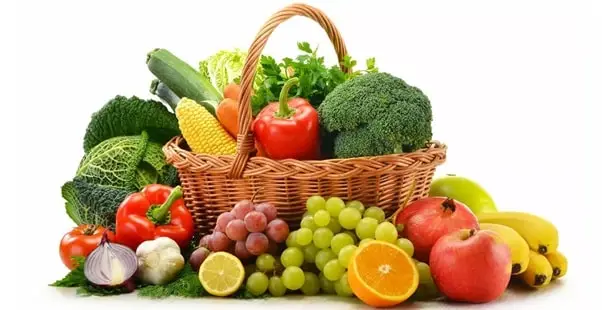The landscape of agriculture across the world is a kaleidoscope with regions producing fruits and vegetable something which the populous thrives on. By 2024, some of these countries have grown to be major global playfields for growing such essential food items. Through this paper, an examination of the top 10 largest producers in the world for both fruits and vegetables shall be undertaken to detail what role they play towards global agriculture as well as what factors that contribute to their successful production.
1. China – 749 Million Metric Tons:
China is the world’s largest producer of fruits and vegetables at 749 million metric tons. Due to its large and diverse farming landscapes and cutting-edge farming practices, the country dominates agriculture. China produces an unparalleled number of fruits and vegetables due to its agricultural skills and innovation.
China’s extensive agricultural lands contribute to this record production. From Shaanxi’s apple orchards to Yunnan’s citrus groves, China’s temperature zones sustain several crops. Many fruits and vegetables may be grown year-round with this type.
National production is remarkable year-round. China’s large farmlands and strategic farming allow year-round agricultural. This guarantees fresh food for a population that eats a range of fruits and vegetables.
2. India – 200.3 Million Metric Tons:
At 200.3 million metric tons, India ranks second in global fruit and vegetable production behind China. Indian fruits and vegetables thrive due to its agro-climatic diversity. Variety helps India become a global agricultural powerhouse, generating commodities crucial to its culture and economy.
India produces a lot of fruit and vegetables due to its huge geography and agro-climatic variation. India also ranks in the top in production of Banana and Mangoes. India’s temperature zones enable year-round agriculture, from Maharashtra’s mango orchards to Karnataka’s onion farms. Climate diversity enables different regions to specialize in growing distinct fruits and vegetables, broadening India’s agricultural production.
India’s culture and economy depend on agriculture. Country’s agricultural methods reflect decades of history and culture. Maharashtra celebrates mangoes, the “king of fruits,” with pride. Onions spice Indian dishes and enhance Karnataka’s economy.
3. Nigeria – 137.8 Million Metric Tons:
Nigeria is the third-largest producer of fruits and vegetables, producing 137.8 million metric tons. The country’s lush land and climate are perfect for cultivating cassava, yams, and tropical fruits.
Agriculture and fruit and vegetable production are famous in Nigeria. The nation’s staple crops flourish on its fertile soils. Nigeria’s cassava and yam output shows its commitment to feeding its people and the globe.
Favorable conditions let Nigerian agriculture grow. Tropical areas are suitable for cultivating many fruits due to their warmth and rainfall. Orchards in Nigeria are full with mangoes, pineapples, and citrus. Nutrient-rich fruits support the economy via local and international trade.
4. Dominican Republic – 48.2 Million Metric Tons:
The Dominican Republic produces 48.2 million metric tons of fruit and vegetables, fourth worldwide. Its tropical climate and nutrient-rich soils make it ideal for producing bananas, plantains, and citrus fruits, which are vital to the global supply chain.
Climate makes Dominican fruit and vegetable growing successful. A variety of crops thrive in warm, humid tropical settings. Dominican Republic bananas and plantains thrive in this climate.
Global production increases with fertile soils. Nutrient-rich soils are suitable for producing many crops. Due to soil nutrient density, bananas and plantains generate high-quality crops that meet global standards.
5. United States – 47.8 Million Metric Tons:
United States produces 47.8 million metric tons of fruits and vegetables yearly, sixth globally. America is a worldwide leader in agriculture due to its vast agricultural landscapes, from California’s orchards to the Midwest’s fertile plains. Due to its diverse weather zones and excellent agricultural technologies, the nation produces apples, strawberries, and lettuce, which are marketed globally.
California’s enormous orchards, famed for its diverse fruit supply, show US agricultural prowess. The state’s Mediterranean climate—warm, dry summers and mild, wet winters—is ideal for cultivating several fruits. The globe gets a lot of apples from California orchards.
United States provides lettuce and other vegetables internationally. Precision agriculture and sustainable farming provide high-quality lettuce nationwide. The U.S. supplies global demand for crisp iceberg lettuce and luxuriant greens.
6. Indonesia – 34.1 Million Metric Tons:
Indonesia ranks sixth in global fruit and vegetable production with 34.1 million metric tons, a key contribution. The archipelago’s tropical climate supports bananas, pineapples, and papayas. Indonesia’s culturally based agricultural methods meet domestic consumption and increase foreign trade.
Tropical fruits thrive in Indonesia’s warm, rainy environment. Versatile and healthy bananas flourish in the country’s lush settings. Indonesia’s excellent soils support pineapples and papayas, diversifying its agriculture.
Indonesia’s global trade relies on tropical fruit production. Indonesia’s ability to export high-quality tropical fruits to meet global demand boosts its market position. Indonesia’s bananas and other tropical delights support the economy and global fruit markets.
Agriculture penetrates Indonesian culture. Modern and sustainable agriculture coexist with traditional methods. A dynamic global market challenges Indonesia’s agricultural economy, yet this ideal mix maintains it strong.
7. Thailand – 33.4 Million Metric Tons:
Thailand ranks ninth in fruit and vegetable production with 33.4 million metric tons. Thailand’s diverse farming methods improve the global market for these vital crops. Thailand’s durians, mangoes, and rice exports strengthen its worldwide agricultural importance.
Thai durians, the “king of fruits,” are popular exports. The unusual taste and fragrance of durians make them famous globally. The country’s economy and global durian supply benefit from skillful cultivation and export.
Thailand exports mangoes, another tropical pleasure. Fruity mangoes from the country’s orchards are plentiful. Thailand exports mangoes to demonstrate its commitment to quality.
Thai grains and fruits are exported globally. Quality and taste are sought from the nation’s rice fields. Thai rice exports help global food security, demonstrating its broad agricultural supply chain.
8. Ghana – 33 Million Metric Tons:
Ghana proudly ranks sixth with 33 million metric tons of product. West African Ghana grows cocoa, plantains, and tropical fruits. This agricultural diversity supports the country and regions.
Many tropical fruits boost Ghana’s economy and regional standing. Ghana produces high-quality citrus, pineapples, and bananas for local and international markets. Ghana’s agricultural diversification highlights its worldwide product supply chain position.
Sustainable farming sustains Ghana’s agriculture. Traditional and contemporary farming practises coexist to preserve culture and adapt to changing agricultural circumstances.
9. Russia – 31.8 Million Metric Tons:
Russian agricultural output ranks ninth worldwide, generating 31.8 million metric tons of fruits and vegetables. The nation’s vast fertile land and varied temperatures support a variety of crops. Russia’s potatoes, carrots, and apples boost worldwide fruit and vegetable markets.
Russia produces plenty of potatoes, a worldwide staple. Russian potato cultivation is self-sufficient and a key supplier of this versatile and popular crop internationally. Carrot farming diversifies Russia’s agricultural product with its nutritional value and culinary versatility.
Fruits like apples are popular and healthful in Russia. Many apple orchards provide types for domestic and international consumption. Russian apple growing expertise demonstrates its dedication to satisfying global demand for high-quality product.
10. Turkey – 31.7 Million Metric Tons:
Tenth in global fruit and vegetable production, Turkey produces 31.7 million metric tons. Its geography and strategic location as a bridge between Europe and Asia make it excellent for cultivating many crops. Cherries, apricots, and vegetables show Turkey’s global fruit and vegetable market share.
Excellent location enhances Turkey’s agriculture. Geographically between Europe and Asia, the nation benefits from climatic and agricultural influences. Turkey’s unusual location allows it to cultivate crops that thrive in many climates, resulting in a diverse and abundant agricultural output.
Turkey’s cherry production excels. Cherries, delicious and brilliant, are plentiful in orchards. Turkey is a global cherry supplier because to its cultivation ability.
Conclusion:
The 2024 top 10 largest producers of fruits and vegetables across the world show both diversity and abundance the global agriculture has to offer. From Asian powerhouses of China, India to emerging contributors like Nigeria and the Dominican Republic, these countries are playing a pivotal contribution to sustain the ever-increasing population of the world. As those countries change and innovate and adapt to agriculture landscapes, they are shaping the course of global food production and making contributions to other well-being throughout the world.

Brandon is the cheif editor and writer at WorldUnfolds.com. With a passion for storytelling and a keen editorial eye, he crafts engaging content that captivates and enlightens readers worldwide.















